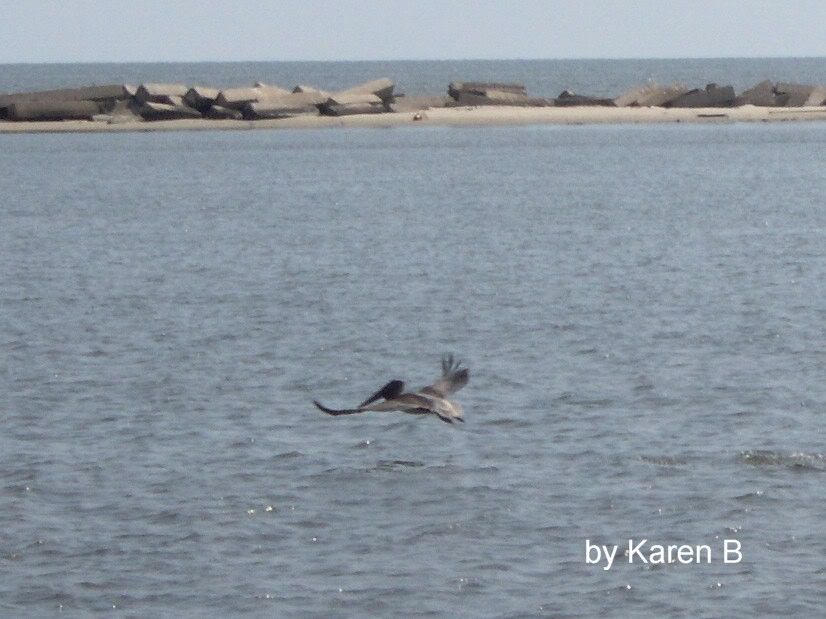Hurricane Camille - 36 Years Later
On August 17, 1969, the Mississippi Gulf Coast experienced one of the worst storms to make landfall in the 20th century. My Dad was on the Coast when it hit and the rest of us were still in Jackson waiting to move down. The winds were still strong enough even 161 miles inland to cause a 12 inch limb on our magnolia tree in the backyard to fall. I remember Mom making all of us kids stay under the table when tornado warnings were issued. When we were finally reunited with Dad, he said the shelter he was in at the SeaBee base lost it's roof. The Sea Bees had the gruesome task of recovering bodies, those that were killed in the storm and those whose graves had been destroyed.
What I remember most when we finally moved from Jackson six weeks later, starting 20 miles from the Coast, the trees were flattened. Only a few pine trees escaped the wrath and none of the trees that were standing had any leaves on them. Most of the major debris had been dealt with, thanks again to the Sea Bees and the people of the Coast who were determined to rebuild. The Sea Bees, my dad included recieved a special unit commendation for their service.
Some forecasters refer to Hurricane Camille as a tornicane(tornado/hurricane) From the meteorological data below, you can see why.
Due to Camille's extreme intensity at landfall, meteorological conditions (winds, tides, pressure...etc.), were impossible to obtain. The National Hurricane Center estimates Camille had sustained winds of 190 mph with gusts in the 210 - 220 mph range. A Transworld oil rig platform tower that was abandoned as the hurricane approached, recorded gusts to 172 mph until failure. It has been estimated that from Biloxi to Gulfport, wind gusts were in excess of 180 mph, while from Long Beach to Waveland, winds likely exceeded 200 mph.
The lowest barometric pressure recorded on land in Camille was 909 mb (26.85) at Bay St. Louis. This is the second lowest barometric pressure ever measured in the United States. Only the 1935 Hurricane produced a lower pressure in the middle Keys of 892 Mb (26.35). Several reports of pressure under 915 Mb (27.00), were reported by survivors near the eye.
Hurricane Camille produced the highest hurricane tidal surge ever recorded in the United States. According to the U.S. Army Corps of Engineers (Mobile District 1970), a still-water, high water mark, of 22.6 feet above mean tide, was measured inside the VFW Clubhouse building in Pass Christian, Mississippi. Additionally, debris drift was found 25 feet above mean sea level in the vicinity of East Beach Blvd. Other locations more than 22 feet above sea level recorded high water marks. This included the Avalon Theater building in Pass Christian, a high water mark inside the building was measured to be 22.2 feet above sea level.Geocities
The storm surge is water that is pushed in front of the storm. On top of the storm surge you have wave action. In my office, across from my desk is a watermark from Hurricane Camille. It is at about six foot. The office itself is 12 feet above sea level. The factory, which is across the street, was built in 1970. There was nothing but slab left of the original factory after Camille. This was 26 miles on from the landfall of Camille on the Back Bay of Biloxi.
The Coast lost 131 lives during Hurricane Camille and 41 are still unaccounted for. Three remain unidentified and have been named Faith, Hope and Charity. It is a custom that after funerals, flower sprays that are left are placed on their graves. The Church of the Redeemer in Biloxi was totally destroyed except for its bell tower. When it was rebuilt, a memorial was made to honor the dead and missing. Church of the Redeemer
The Harrison County Library has pictures after the onslaught of Camille.
The people of the Mississippi Gulf Coast do not take hurricanes lightly. Still being gun shy after Camille, when there is one out in the Atlantic heading toward the Caribbean, a lot of people, me included start checking what supplies are needed. When it heads into the Gulf and looks like it's going to head north before passing the Yucatan Peninsula, the preparations kick into high gear.
Mississippi has been hit by eight major hurricanes. We've only experienced a total of 15, so over half of the ones that have hit have been major ones. There has only been one storm stronger than Camille to hit the US, an unnamed storm that hit the Florida Keys in 1935.
We remember and have not forgotten. It took the Coast almost 20 years to fully recover from Camille, but it has been rebuilt and is growing and thriving.


4 Comments:
Wow! I didn't know about Camille...course I was only a year old. Sounds horrible. Glad Mississippi has bounced back.
I remember Hurricane Agnes scaring the crap outta me. Now I have earthquakes.
I was 7 when it hit. The only good thing about hurricanes is that you have warning of them and can run. Mississippi has a couple of fault lines. The one in north MS gave the state a jolt about 3 or 4 years ago. The one close to where I live hasn't done anything in over 200,000 years.
How ironic. I was reading this and couldn't believe you were acting like Katrina never happened. When you wrote this on the 17th, you had no way of knowing that just 12 days later, the Coast would be hit by Katrina. Wow!
Yeah, it was ironic. I thought no hurricane could be worse than Camille. I wrote this post in 2005 and like you stated, 12 days later Katrina showed us who was boss.
Post a Comment
Subscribe to Post Comments [Atom]
<< Home